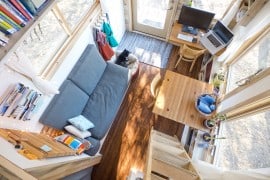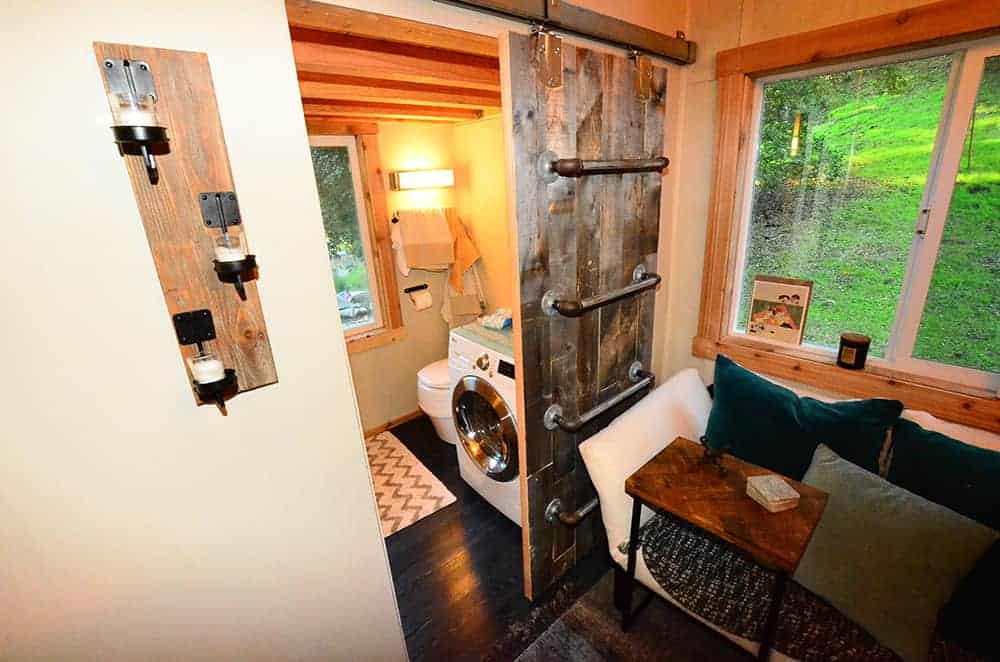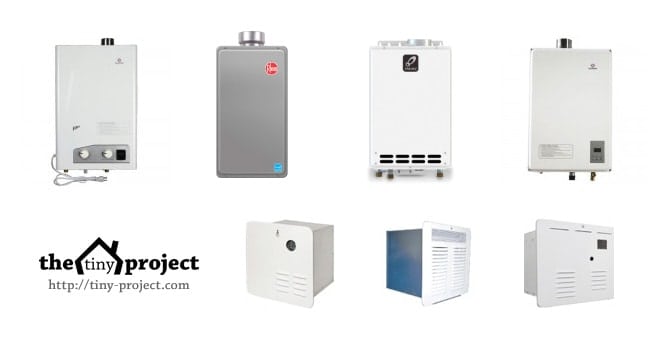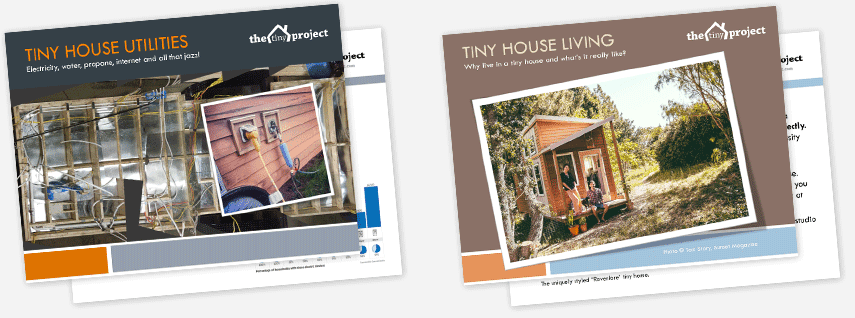How Sustainable are Tiny Houses?
Tiny houses have their advantages for the environment. Besides their tiny footprint on the land they occupy, a tiny house can definitely help you keep your carbon footprint tiny, too.
Many of the creative space-saving and self-sufficient concepts used in the design of tiny houses have sustainability benefits that can be applied to larger homes as well. If you are building a home that is 1000sqft or larger then you could think about hiring a LEED consultant to help you get your home LEED Certified.
In case you don't know, Leadership in Energy and Environmental Design (LEED) is a rating system devised by the United States Green Building Council (USGBC) to evaluate the environmental performance of a building and encourage market transformation towards sustainable design.
Below are the 5 main ways tiny houses excel with sustainable design:
1. Multi-functional Rooms
 Conventional homes typically have multiple rooms, each with their own purpose. Tiny houses, on the other hand, make optimal use of limited space by having rooms that serve multiple purposes, often simply by pulling out a cleverly concealed fixture, such as a bed, work surface or desk. But, larger homes can also benefit from creatively designed fixtures and fittings that make rooms multi-functional and thus use space more efficiently. Let's face it, your bed doesn't get much mileage whilst you're slogging away at your desk during office hours or watching TV from your couch. By the same token, your desk and couch lie dormant whilst you spend the night sleeping in your cozy bed. Doubling up on these spaces makes sense and cuts down on the total amount of space needed in a home, or frees up space that can be used for some other purpose, such as a ping-pong or pool table for example.
Conventional homes typically have multiple rooms, each with their own purpose. Tiny houses, on the other hand, make optimal use of limited space by having rooms that serve multiple purposes, often simply by pulling out a cleverly concealed fixture, such as a bed, work surface or desk. But, larger homes can also benefit from creatively designed fixtures and fittings that make rooms multi-functional and thus use space more efficiently. Let's face it, your bed doesn't get much mileage whilst you're slogging away at your desk during office hours or watching TV from your couch. By the same token, your desk and couch lie dormant whilst you spend the night sleeping in your cozy bed. Doubling up on these spaces makes sense and cuts down on the total amount of space needed in a home, or frees up space that can be used for some other purpose, such as a ping-pong or pool table for example.
2. Sliding Doors

Source: http://www.tinyhousebasics.com/
Conventional hinged doors take up far more space than necessary when used on a doorway or wardrobe, as the space in the pathway they move through when swung open is substantial and cannot be used for anything else. Sliding doors are a great space-saving alternative, and with a bit of creativity can form the focal point of a room. Make sure to choose doors made from non-toxic sustainable materials such as Certified woods.
3. Bring the Outdoors In

A glass sliding door opening out onto a terrace with a nice view of the natural world brings you closer to nature and helps one unwind at the end of a busy day. By incorporating outdoor space, such as a patio or terrace, into your design, you not only naturally increase the amount of living space, but can also make use of natural lighting to lighten a room and sunlight for warmth, thus reducing energy costs for lighting and heating.
4. Energy Saving Features
To maximize energy efficiency, some thought should be given to both the orientation of the building as well as window placement, incorporating passive solar into the design. Opt for energy-efficient windows for improved insulation to prevent heat loss from the home. Other energy saving features such as energy-efficient appliances and lighting powered by renewable energy, together with a solar hot water system, can improve energy efficiency further, and with careful planning can allow the home to be completely self-sufficient in terms of its energy supply.
5. Improved Water Efficiency
Water is a valuable resource that should be used efficiently by everyone, no matter what size home you live in. Tiny homes typically include a rainwater harvesting system to facilitate a self-sufficient off-grid lifestyle in places where there may be no municipal services available. Larger homes can also have rainwater tanks installed to harvest rainwater that falls onto a roof or other surface to improve water efficiency. The water stored in the tanks can be used to wash vehicles, water the garden, top up the swimming pool, and can even be used for drinking if tanks made from non-toxic food grade materials are used and the water is treated appropriately.
Installing water-wise plumbing fixtures together with a grey water system are other ways that can help save water in the home. Recycling grey water by channeling it into the garden or veggie patch to keep plants watered maximizes the efficiency of your water use and helps your plants to flourish during dry spells.
As we can see, tiny house hacks are not limited to tiny houses. When working on any project, large or small, a bit of creativity can help save space, materials and building costs without compromising on any home comforts. By the same token, incorporating measures to save water and energy in the design and construction phase will reduce running costs in the future.





I loved how you said that you will be more involved with the outdoors by living in a tiny home. My wife loves to stay in the mountains for vacation. I'll be sure to ask her if she wants to move into a tiny home in the mountains.